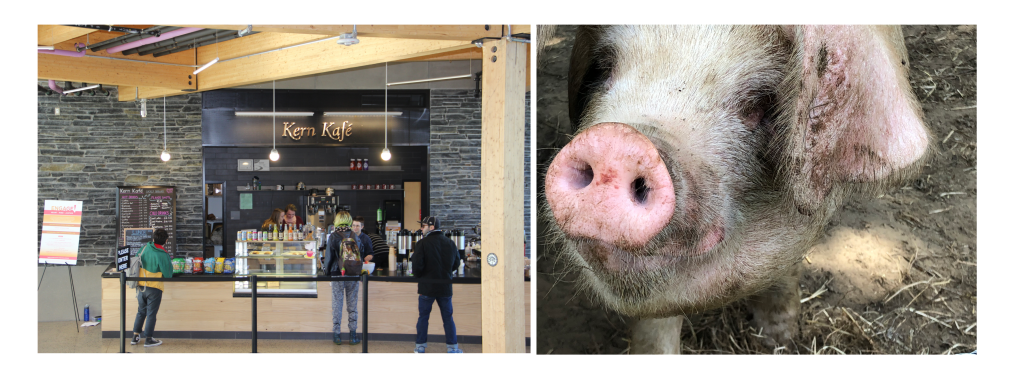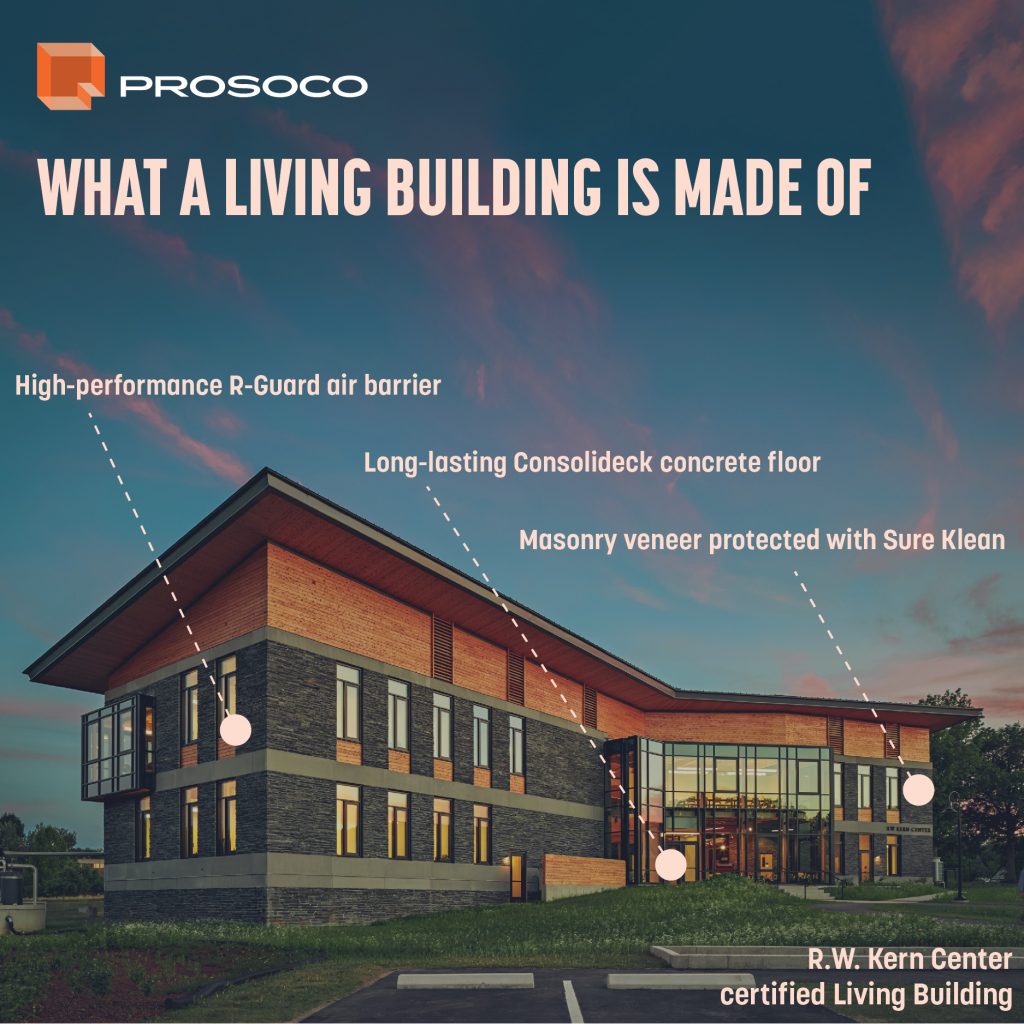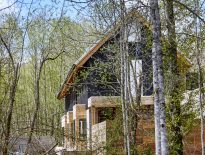Living Building Makers: Creating Sustainable Buildings That Renew Our World
Editor’s Note: The following are excerpts from Ecotone Publishing’s forthcoming release, Living Building Makers: Creating Sustainable Buildings that Renew our World by Jonathan Wright. Reprinted with permission.
Living Building Makers: Creating Sustainable Buildings That Renew Our World is a handcrafted collection of stories celebrating the people who bring the built environment to life. Set on the Hampshire College campus, Jonathan A. Wright’s stories are a tribute to the unsung individuals – builders, tradespeople, designers, engineers, educators, craftspeople, and owners – who rolled up their sleeves to play a part in creating two of the greenest buildings in the world on the Hampshire known as the R.W. Kern Center and the Hitchcock Center for the Environment.
Jonathan A. Wright is an accomplished maker with more than forty-five years’ experience as an expert builder specializing in the construction and design of sustainable, healthy, high-performance buildings. Wright Builders, Inc. constructed two Living Buildings on the Hampshire College campus known as the R.W. Kern Center and the Hitchcock Center for the Environment.

Four Scientists Walk into a Diner: A Chapter Excerpt
Four science and math colleagues from Hampshire College walked into the busy metro café diner in Atlanta, surrounded by the looks and smells of fresh-cooked bacon, home fries, and grits awash in butter. Preparing to re-enter the no-daylight realm of the “Transforming STEM in Higher Education” conference, they took a booth and ordered up. Together, they brought to the table compelling passions for microbes, calculus, groundwater, and slime.
Jason Tor, the microbiologist, wondered how they could they use the College’s new Living Building to teach science. “It’s going to be full of interesting systems for water and waste and energy,” he said. Not to be left out, Sarah Hews, professor of mathematics, remarked with a characteristic twinkle in her eye, “You know, everything comes back to calculus. We can use mathematical models to understand what’s going on. The students will do projects and find themselves using calculus before they know it.”
“I was very excited by the conversation! It seemed like a great new idea, and an opportunity to collaborate and learn from each other. We were talking a lot about community, and about attracting students to the sciences in their first year of college,” remarked Jason Tor.

They began to talk about how the R.W. Kern Center’s greywater waste stream would work, since, as Tor likes to say, “Microbes do all the world’s work.” Professor Christina Cianfrani, a hydrologist, was keen to understand all aspects of the water system, from rooftop collection to storage, and especially the waste stream and groundwater impacts. Megan Dobro, professor of biology, was also there for this lively discussion.
Over the next sixty minutes, surrounded by the remains of eggs, muffins, and grits, they mapped out a collaborative model for teaching first-year college students to engage critical scientific and environmental questions using the not-yet-constructed R.W. Kern Center. They would each have seminars, and at least once every week the groups would get together and students would form collaborative project teams. By modeling truly collaborative teaching about issues they were still exploring in their own research, professors would expose these students fresh out of high school to the exciting mysteries of unexplored science and the dynamics of human interaction with the environment. All this through a building. Not just any building, but a Living Building designed and conceived to carry an abundant embedded message of curiosity.
Professor Cianfrani remarked that, as Hampshire teachers, they were encouraged to take risks and explore new areas of study. “Promotion and reappointment guidelines reward this. Our spirits are free to follow the students’ interest, our own passions, and the data from the building itself as it is collected.”
In the particularly bitter winter of 2014-2015, while Wright Builders and the rest of the project team was slogging it out as to what materials we could use and how to ensure that the construction quality exceeded the energy modeling by a healthy margin, students were getting ready to understand energy modeling with the help of Earth Sciences Professor Steven Roof. Would it really be possible for this very busy building, almost a transit station on the campus, to conserve its energy effectively enough to reach net zero annual consumption? Over the next several years, students and faculty would examine all parts of the building, culminating in a project to record and document the building’s actual energy usage.
Who knew that copiers and printers use more than half their daily energy during sleep mode? Who knew that an espresso machine uses half its daily energy just keeping the water reservoir warm so baristas can start up on two minutes’ notice? First-year Hampshire students, working with Professor Roof, figured this out.
Witnessing this student and faculty engagement was powerful for Jason Forney, project architect. “So many institutions aspire to use a new building as a teaching tool, but everyday life somehow conspires against this goal,” he said. “For Hampshire, curiosity is just in their blood.” Like professors who want their students to be excited and grow, builders and architects want their buildings to DO something, SAY something, CREATE something. All living things communicate, even Jason Tor’s tiny, heroic microbes; it’s just that most of the time we are not listening.
After the building opened, Todd Holland, Hampshire’s staff mechanical engineer, was listening closely, not only to the messages from the greywater system but to his voicemails, all pointing to the same curious thing: a sweet, ripe, smell was beginning to pervade the R.W. Kern Center, especially in the wide open, naturally lit atrium area where everyone gathers, meets, connects, and passes through.
Visiting days were at hand, so this was a mystery that needed to be solved. In other institutions, heads might have rolled because the building was not at tip-top spit and polish in time for these important events. Instead of panicking, Todd addressed the malodorous issue in a manner that conveyed the project’s mission and invited the visitors’ curiosity. A note appeared on the north entry door that simply said, “Please excuse the inconvenience. Our research is continuing.”
It turned out that the wastewater and coffee from the Kern Kafé, mixed with the end-of-day pour-off of leftover milk and cream, was creating an unmanageable brew of rich nutrients. When these circulated through the drip irrigation hoses in the planters, things began to go sour. Very sour. The solution was to catch solids in a used piece of nylon stocking and save all the leftover dairy for the pigs down at the Hampshire College Farm.

Every human action affects the surrounding natural systems, either positively or negatively. In this case, the impact of our intervention was apparent within a few days. We couldn’t turn away, shrug, or set the issue aside for another day. Our responsibility as conservators was to dig in, all the way, right away.
This solution was another step in the research that began as a breakfast conversation in Atlanta, with faculty looking for a fresh way to connect with students and with each other. From that yearning for adventure and community came curricula for several disciplines within natural sciences and mathematics. In 2017, the four scientists received a grant to travel and see other Living Buildings, and to develop a broad-based national curriculum around Living Buildings.
Jason Tor told me, “You know, I used to wish that someday we would get a new science building. Then I realized, with the R.W. Kern Center, we already had one!”
Read more of Living Building Makers: Creating Sustainable Buildings That Renew Our World when the book is released this spring at the Ecotone Bookstore.



